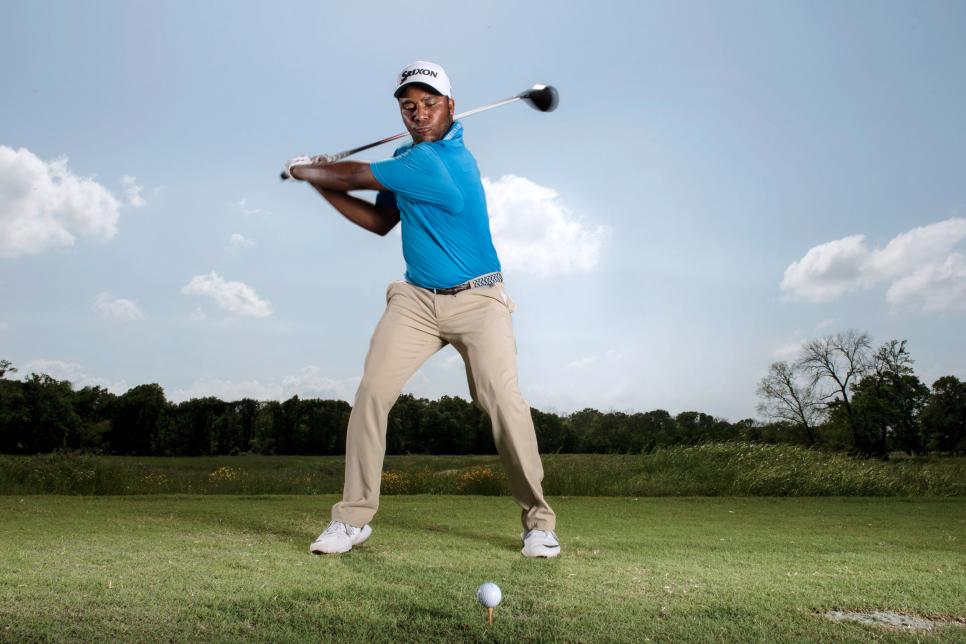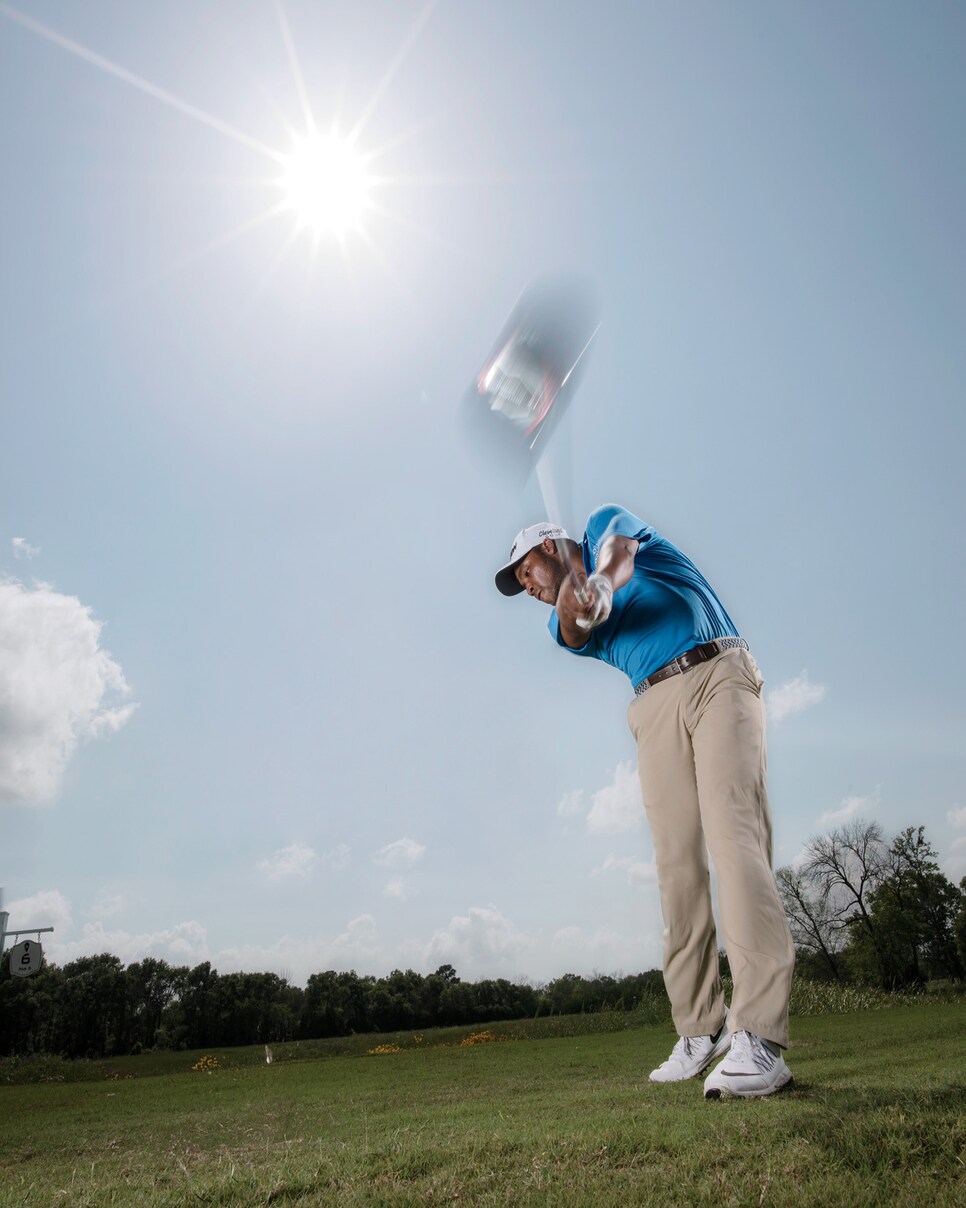Driving
Harold Varner III: When The Situation Demands Your Biggest Tee Shot

Dom Furore / Golf Digest
Out here on the PGA Tour, we're constantly put in situations where—to carry a bunker or water hazard, set up a par 5 in two, or even drive a green on a par 4—we have to crank it up. Don't get me wrong. I'm usually looking to make a swing with good tempo, hit the ball as straight as possible, and hope to find a little effortless power. But there are times when that's not enough. Sometimes I have to step on the driver. That's what you want to know about here, I'm guessing. When I need 20 extra yards, how do I get it? There's a little more to it than swinging harder. Actually, having the thought of swing harder will probably produce a shorter shot than your normal drive because of poor timing and too much tension. So that's my first piece of advice. If you want extra yardage, you have to relax, and make sure your swing stays in sync. The goal is to get in a position like you see me in here. I'm swinging down with a little extra muscle, because I stayed patient and relaxed to this point. From here, I can just unload on it. Here are a few more tips to get the ball out there. —With Ron Kaspriske
BACKSWING: TURN AND PAUSE
Setup adjustments will help. Tee it a little higher, stand a little wider, and feel like your whole body is behind the ball. If you want to hit it a long way, what really matters is your backswing. You've got to really turn. That doesn't necessarily mean taking the club back super far. It means the muscles in your upper back should feel a little tight at the top before you swing down (below). If you don't complete the backswing, you're screwed. Try this on the range: As you reach that wound-up point in your swing, pause for a split second before you start down. On tour, Hideki Matsuyama does that when he plays, and he can really crank it. That pause syncs everything up in his swing.

Dom Furore / Golf Digest
BACK IT UP: Ideally you can turn until your back is at least partially facing the target.
POST TIME: At the top of the swing, feel loaded on your back leg–ready to push off of it.
TEE IT HIGH: A higher tee will help you launch it. But a few inches high is plenty.
THROUGH-SWING: GET OFF YOUR BACK FOOT
The problem I see with amateurs who try to hit bigger drives is, they swing off their back foot like they're in a home-run derby. You do want to hit up on the ball like some big dude standing at home plate. But to get more distance on the course, you have to shift your weight onto your front foot before you hit the ball. And there's one more thing you have to do: Keep your upper body back. What I mean is that although you'll feel all your weight shift into the front foot, your upper body doesn't lunge forward with it. It should stay behind the ball's position on the ground—even after the ball is struck. So how do you do that? Try my swing thought. At the top, I think, turn my hips. That shifts my weight forward, but only in the lower body. My upper body stays behind the ball's position and the club whips through. That's what you see here (below). I'm using my body weight to make a more powerful swing. The club moves faster without me having to think about swinging faster. That's how you mash it.

Dom Furore / Golf Digest
When Varner swings his fastest, his driving distance increases by 15 yards from his average and 30 yards from his slowest swing.

Source: Shotlink, Foresight Sports
(Editor's Note: This article was originally published in 2017.)